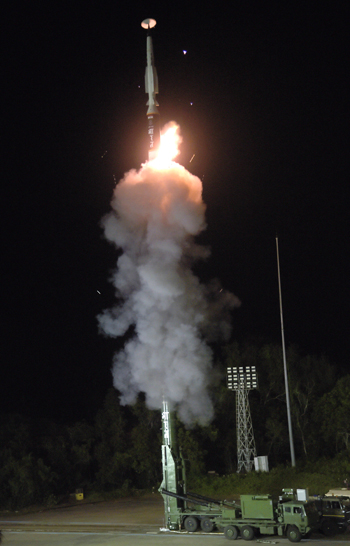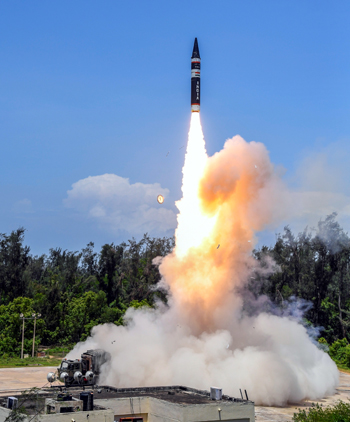INDIAN ARMED FORCES CHIEFS ON OUR RELENTLESS AND FOCUSED PUBLISHING EFFORTS

The insightful articles, inspiring narrations and analytical perspectives presented by the Editorial Team, establish an alluring connect with the reader. My compliments and best wishes to SP Guide Publications.

"Over the past 60 years, the growth of SP Guide Publications has mirrored the rising stature of Indian Navy. Its well-researched and informative magazines on Defence and Aerospace sector have served to shape an educated opinion of our military personnel, policy makers and the public alike. I wish SP's Publication team continued success, fair winds and following seas in all future endeavour!"

Since, its inception in 1964, SP Guide Publications has consistently demonstrated commitment to high-quality journalism in the aerospace and defence sectors, earning a well-deserved reputation as Asia's largest media house in this domain. I wish SP Guide Publications continued success in its pursuit of excellence.
- Operation Sindoor: Resolute yet Restrained
- Advanced MRSAM for India for a greater firepower
- Japan and India set forth a defence cooperation consultancy framework, talks on tank and jet engines
- Uri, Pulwama and now Pahalgam
- Terrorist Attack in Pahalgam in Kashmir: Unfolding a long surgical war against PAK
Indigenous Long-Range Anti-Ship Missile
Anti-ship ballistic missiles (ASBMs) require a precise and high-performance terminal guidance system with advanced sensors and in-flight calibrations in order to successfully hit a moving vessel at sea
 |
The Author is Former Director General of Information Systems and A Special Forces Veteran, Indian Army |

The advent and proliferation of anti-ship ballistic missiles (ASBMs) have raised the threat levels to moving targets at sea, like warships, aircraft carriers and other surface craft. Traditional ballistic missiles follow a predictable trajectory, making them effective against fixed targets but less so against dynamic ones. Due to the high flight speed of ballistic missiles, an ASBM's kinetic energy alone may be sufficient to cripple or outright destroy a target with a single conventional warhead impact. Unlike a nuclear warhead, however, this would require a direct hit to be effective; therefore unlike a land attack ballistic missile, which typically strikes fixed targets in known positions, an ASBM requires a dedicated sensor chain to detect and identify its target, combined with a precise and high-performance terminal guidance system with advanced sensors and in-flight calibrations and terminal phase maneuovrability to adjust their flight path in order to sucessfully hit a moving vessel at sea.
China inducted the world's first operational ASBM, DF-21D "carrier killer" with a range of 1,800 to 2,000 km, with the potential of targeting US aircraft carriers in the Pacific. The DF-21D can carry both conventional and nuclear warheads. In 2010, it was reported that China had entered the DF-21D into its early operational stage for deployment. During the 2015 Victory Day Parade, China showcased the DF-26, capable of carrying anti-ship warheads, possibly hypersonic glide vehicle like the DF-ZF, to attack medium and large naval vessels at ranges of 3,500–5,000 km.
China inducted the world's first operational ASBM, DF-21D "carrier killer" with a range of 1,800 to 2,000 km, with the potential of targeting US aircraft carriers in the Pacific
China is now developing a second-generation ASBM, using hypersonic manoeuvrable re-entry vehicles technology tested on the DZ-ZF; allowing the warhead to search for the current location of the carrier. The high-speed manoeuvres would also make the missile much harder to intercept. China's Type 055 destroyers are armed with the YJ-21 ASBMs along with the YJ-18 anti-ship cruise missiles.


Pakistan successfully conducted flight test of an indigenously developed ship-launched anti-ship ballistic missile 'P282'' with a 350-km range in November 2024. The missile system, equipped with advanced navigation and manoeuvrability features, is capable of striking land and sea targets with high precision. It can also be launched from a ship and speculation is it could eventually be hypersonic with a speed exceeding Mach 5, and a range of 1,000 km since the speed of the missile increases with its range.
In February 2011, Iran demonstrated a short-range ASBM, named 'Khalij Fars' with a range of 250–300 km. This was followed by the 'Hormuz' ASBM. In 2020, Iran unveiled the 'Zulfiqar Basir' with a range of 700 km. Subsequently, Iran reported successful testing of the 'Emad' anti-ship missile capable of targeting aircraft carriers at a range of more than 1,000 km.
The Defence Research and Development Organisation (DRDO) is currently developing the Long Range – Anti Ship Missile (LRAShM), which is a hypersonic missile, for the Indian Armed Forces
The Defence Research and Development Organisation (DRDO) is currently developing the Long Range – Anti Ship Missile (LRAShM), which is a hypersonic missile, for the Indian Armed Forces. The anti-ship version, which can be fired from a shore-based transporter erector launcher (TEL), is the first variant that is undergoing developmental trials for the Indian Navy. A ship-launched naval variant is also being developed, while land-based land attack variants of the missile will also be developed subsequently.

DRDO has developed a number of missiles for the Indian Armed Forces but the development of a conventionally armed missile with a range of more than 1,500 km was deemed necessary to counter ship-based threats in the Indian Ocean, Bay of Bengal, Arabian Sea, as well as land-based threats from beyond the Line of Actual Control (LAC). By September 2022, DRDO had completed design work of a land-based 1,500 km range missile to attack targets across LAC with an anti-ship variant against enemy aircraft carriers.
China is now developing a second-generation ASBM, using hypersonic manoeuvrable re-entry vehicles technology tested on the DZ-ZF; allowing the warhead to search for the current location of the carrier

Another missile, designated 'BM-04' was developed in 2024 and its model displayed in March 2025 as a further developed variant of Agni-P ballistic missile in order to neutralise enemy anti-access/area denial (A2/AD) capabilities. The BM-04 was developed as a response the requirement of the Indian Armed Forces to equip the proposed Integrated Rocket Forces with a 1,500 km range-class conventional ballistic missile.
The LRAShM is being developed at the Dr APJ Abdul Kalam Missile Complex with other DRDO laboratories and industry partners. The Vehicle Research and Development Establishment (VRDE) is assigned the responsibility for developing the dummy article to simulate load and force on the vehicle during trials to Sterling Techno-Systems, a private sector business based in Pune. The aerodynamic characterisation research was conducted at the 1.2m Trisonic Wind Tunnel Facility of the National Aerospace Laboratory. The LRAShM features a delta-wing hypersonic glide vehicle mounted on a missile booster which sends it partially into orbit. The HGV can perform terminal manoeuvres and follow highly complex and adaptive flight paths. It has a demonstrated range of at least 1,500 km. The missile will have several warhead configurations for use in various roles by all the branches of the Indian armed Forces.
Avinash Chander, former Chief of the DRDO, has confirmed that India's Agni-1P missile, with a range of 1,000 to 2,000 km is capable of sinking moving targets, marking a major leap in India's missile technology
The first test of the (LRAShM) was conducted on an unspecified date in 2023 as per the 2023 Year End Review of the Ministry of Defence (MoD). The missile was again tested on November 16, 2024 from the Abdul Kalam Island, Odisha. The missile was tracked by optical sensors. The test was successful and terminal manoeuvres and accuracy of the missile met the development team's expectations. Key specifications of the LRAShM include: Operational Range – 1,500 km; Maximum Speed – Mach 8-10; Launch Platform – TEL, VLS (Warships).
In a recent interview, Avinash Chander, former Chief of the DRDO, has confirmed that India's Agni-1P missile, with a range of 1,000 to 2,000 km and being the lightest ballistic missile (BM) in the Agni series, is capable of sinking moving targets, such as warships and aircraft carriers, same as China's DF-21D; marking a major leap in India's missile technology. The Agni-1P positions India as a formidable player in the maritime defence and strategic deterrence sphere.





